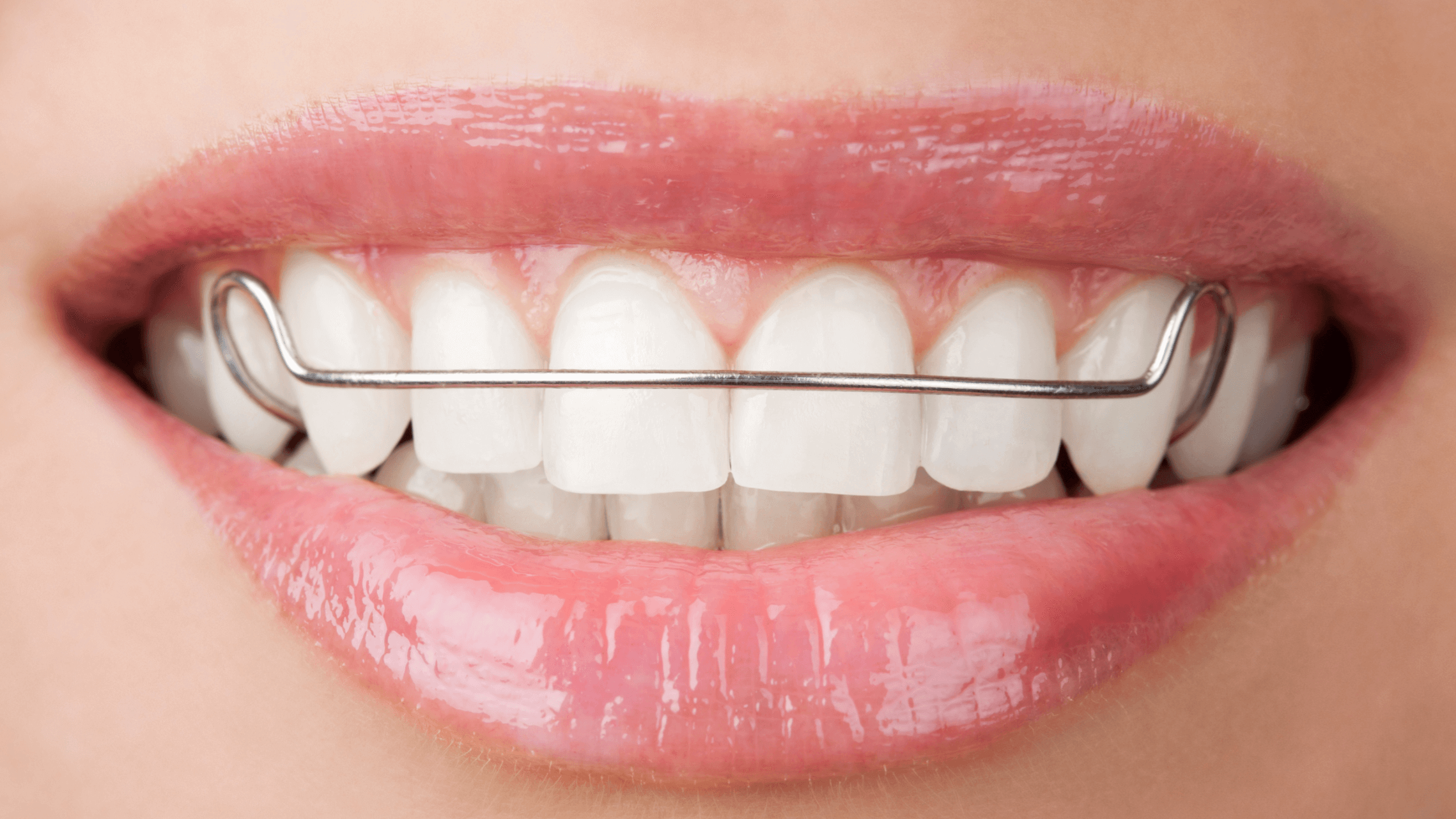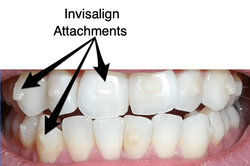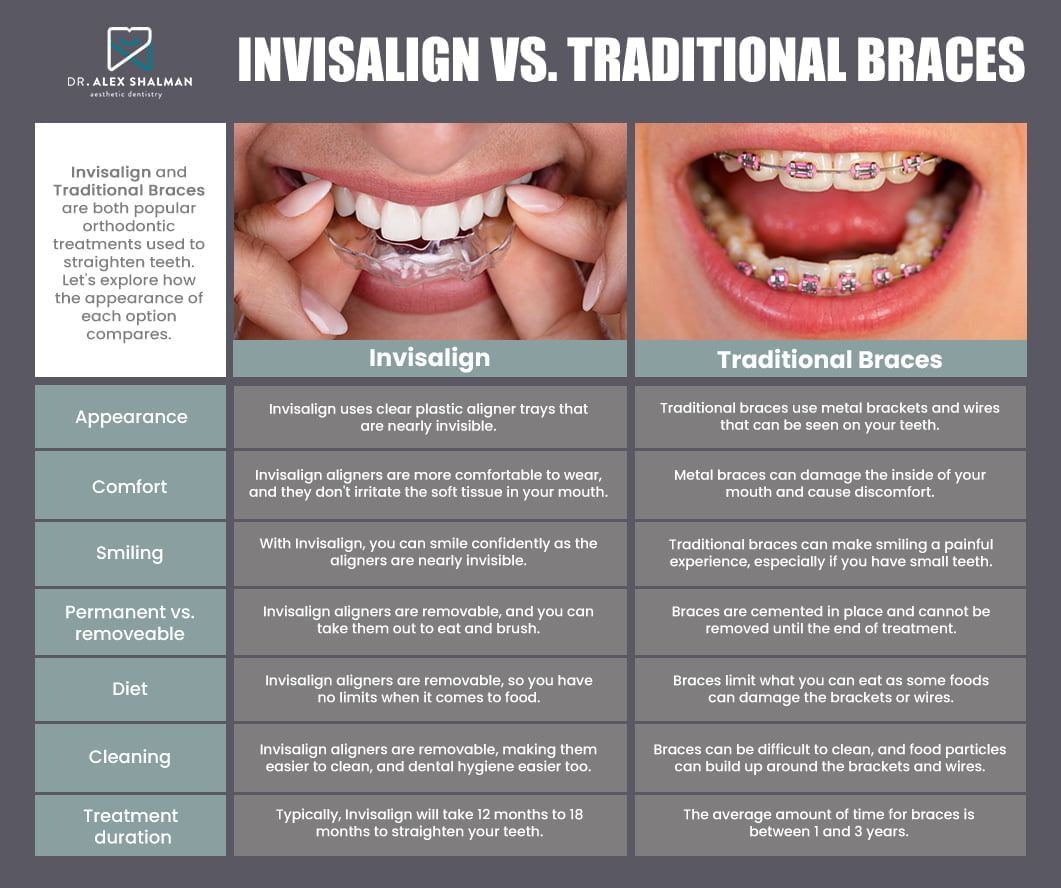The Cost of Invisalign: Understanding the Investment in Your Smile
The Cost of Invisalign: Understanding the Investment in Your Smile
Blog Article
Invisalign vs. Standard Dental braces: Which Alternative Is Right for You?
When thinking about orthodontic therapy, the selection in between Invisalign and conventional braces offers numerous crucial elements that merit mindful examination. Invisalign provides a discreet choice with removable aligners, while traditional dental braces supply a more noticeable yet efficient service for extreme imbalance.
Summary of Therapy Choices
&srotate=0)
In contrast, standard dental braces include metal brackets and cables that are adhered to the teeth. This method applies continual pressure over time to achieve positioning. While efficient for complicated orthodontic issues, typical dental braces require regular brows through for modifications and can present difficulties in keeping dental hygiene due to the problem of cleaning up about cords and braces.
Both options have their benefits, and the option commonly pivots on details oral problems, way of living choices, and patient compliance. Ultimately, speaking with an orthodontic expert is important for figuring out one of the most ideal therapy strategy tailored to private needs. Understanding the nuances of each option can significantly influence the total success of orthodontic treatment.
Visual Considerations
A substantial aspect influencing the selection between Invisalign and traditional dental braces is the aesthetic allure each treatment offers. Invisalign aligners are crafted from clear plastic, making them basically unnoticeable when put on.
On the other hand, conventional dental braces contain steel brackets and cords, which can be much more noticeable. While improvements in orthodontic technology have actually resulted in the growth of smaller braces and colored elastics, standard braces still preserve an even more conspicuous account. For some people, the visibility of dental braces may discourage them from looking for required therapy.
Ultimately, the choice between Invisalign and conventional dental braces may hinge on individual choices concerning aesthetics. Individuals that prioritize discretion commonly lean towards Invisalign, while those who are less worried concerning visibility may select typical dental braces. Understanding the aesthetic ramifications of each alternative is crucial for making a notified choice that straightens with one's way of living and preferences.
Comfort and Convenience

In terms of convenience, Invisalign aligners are detachable, making it possible for individuals to enjoy their favorite foods without constraint and preserve optimal dental hygiene. Brushing and flossing are streamlined, as the aligners can be gotten during these regimens, whereas conventional dental braces need careful steering around cords and brackets.
Additionally, Invisalign's modern system permits less orthodontic check outs. Clients usually obtain several collections of aligners at when, which can streamline the therapy procedure and minimize time spent in the orthodontist's chair. On the other hand, traditional dental braces necessitate routine adjustments, making them less hassle-free for those with hectic timetables. Invisalign. In general, the convenience page and benefit of Invisalign make it an enticing option for numerous people seeking orthodontic therapy.
Treatment Duration and Efficiency
While both Invisalign and traditional braces are efficient in dealing with oral misalignments, the duration of treatment can differ dramatically between the two choices. Normally, Invisalign therapy can take anywhere from 12 to 18 months, depending on the complexity of the situation. The clear aligners work by slowly changing teeth right into their wanted positions, and regular follow-ups with an orthodontist help guarantee development stays on course.
On the other hand, typical dental braces often require a longer commitment, usually ranging from 18 months to three years. This is due to their fixed nature and making use of cords and braces, which can be extra reliable for complicated situations and serious misalignments (Invisalign). The treatment efficiency of standard dental braces is well-documented, as they enable accurate adjustments and greater control over tooth movement
Inevitably, the selection in between Invisalign and conventional braces might depend upon both the expected treatment duration and the details oral problems at hand. Consulting with an orthodontist is essential, as they can provide customized suggestions based on individual demands, making sure the selected method straightens with preferred outcomes and durations.
Price Contrast and Insurance Alternatives
Expense plays a significant duty in the decision-making procedure for people considering orthodontic therapy, whether deciding for Invisalign or conventional braces. On average, the price of Invisalign varieties from $3,000 to $8,000, while traditional dental braces usually cost in between $2,000 and $6,000. Factors affecting these costs consist of the complexity of the case, the duration of treatment, and geographical place.
Several dental insurance coverage strategies give partial coverage for orthodontic treatments, however the specifics can differ extensively. Generally, conventional braces might be extra regularly covered by insurance plans compared to Invisalign, which some insurance companies classify as an aesthetic treatment.
In addition, several orthodontic practices provide versatile layaway plan, making both therapy choices a lot more obtainable. People should ask about potential financing options and discounts for upfront payments. Evaluating the total price, consisting of insurance policy advantages and settlement strategies, is necessary for making an educated choice that lines up with both aesthetic preferences and budget factors to consider.

Final Thought
In summary, the choice in between Invisalign and typical dental braces pivots on several elements, including aesthetic choices, convenience, treatment duration, and price. Invisalign supplies a very discreet, removable option that facilitates dental health and dietary flexibility, while typical dental braces might be preferable for complex oral problems and often come at a lower cost point. More Info Eventually, consultation with an orthodontist is important to examine individual circumstances and identify the most proper treatment option for attaining ideal dental placement.
When thinking about orthodontic treatment, the selection between Invisalign and typical braces presents a number of important variables that merit mindful examination.Contrasting Invisalign and standard braces exposes distinctive treatment alternatives for orthodontic adjustment.While both Invisalign and traditional dental braces are effective in remedying dental misalignments, the period of treatment can differ significantly between the 2 options.Expense plays a substantial role in the decision-making procedure for people thinking about orthodontic therapy, whether opting for Invisalign or wikipedia reference conventional dental braces.In recap, the choice in between Invisalign and typical braces hinges on numerous factors, including visual choices, convenience, treatment duration, and expense.
Report this page